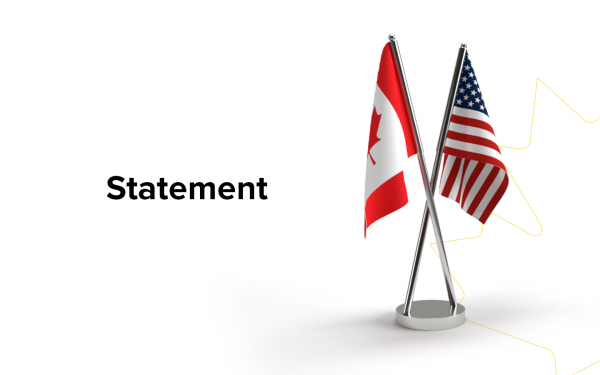Canada has a new chance to take charge in the future of globalism
As published by the Globe and Mail.
Among the many challenges COVID-19 has presented to countries around the world, one of the biggest has been a lack of access to a reliable, trusted supply of personal protective equipment (PPE) for frontline workers. Thankfully, Canada is now reportedly close to becoming self-sufficient in PPE production Loading…. On that front, we seem to have won the battle – but we haven’t even begun to prepare for the war.
As the pandemic took hold in Canada, our focus became clear: slow the spread, protect the vulnerable and equip frontline and essential workers. Governments quickly realized the urgent need for PPE and the international marketplace was likened to the “Wild West.” Supplies were scarce and many of the products were of dubious quality. And to add insult to injury, in Canada, most of our domestic manufacturing capabilities had long been offshored and we were left to try to import life-saving supplies from overseas.
When the PPE supply shortage was dire, Canadian companies that were able to step up took positive first steps toward a homegrown solution. Canada Goose, alongside other Canadian brands such as Bauer, Stanfield’s, Calko Group and many others, answered the call to help meet the demand. We retrofitted our factories, recalled and retrained our work forces and set out to secure the safety of our communities, producing critical medical equipment for frontline workers across the country. Canada Goose alone is on track to produce more than two million gowns at cost, forgoing all profit, by this fall across our facilities in Winnipeg, Toronto and Montreal.
It’s fortunate that there are still Canadian companies with significant domestic manufacturing capabilities. Precoronavirus, nearly 100 per cent of Canada’s PPE was imported, outsourced to the lowest-cost producers around the world. In the wake of the initial coronavirus outbreak, we’ve learned that when it comes to our most strategic assets, prioritizing price is not without peril. Most importantly, we’ve learned that Canada’s affinity for the lowest-cost solution directly affects our ability to guarantee product quality as well as availability. That may not matter when it comes to a T-shirt, but when it’s a matter of life or death, we need to know PPE is at the ready and passes the test.
If our access to essential goods can be so quickly and dramatically disrupted, it’s clear that we need to reimagine our approach to manufacturing them domestically. Canada – and every country – needs a strategic and proprietary supply chain in order to keep people safe in times of crisis. So how does Canada further re-establish strategic domestic manufacturing capabilities responsibly, while maintaining the standards of quality control, working conditions and environmental impact we worked so hard to advocate for and advance?
The answer, in short, is two-tiered: diversifying both our manufacturing capabilities domestically and the countries we’re outsourcing from. At home, we need to identify those industries we deem strategic to national security – PPE, food and technology come to mind, and surely there are others – and we must ensure the long-term viability of domestic manufacturing capabilities across each of these industries. Abroad, we need to establish a co-operative trade strategy with other like-minded countries that would guarantee our access to strategic essentials, in good times and bad.
With this modified approach to globalism, we would strengthen Canada’s share in international trade by producing what we can and diversifying our supply of essentials from varied and trusted foreign supply chains to supplement the rest.
For businesses, manufacturing apparel on a large scale in Canada is not without challenge – believe me, I know – but investing in our workers, in sustainable practices and in technology and innovation is essential to our future. A company’s decision to manufacture in Canada should not rest solely on cost. We also have to consider the power of “Brand Canada” among consumers. Companies who take up the charge will be rewarded, because every day is like a real-time election where consumers are voting with their wallets.
The value behind made-in-Canada products is only growing, and investment in Canadian goods is an essential piece of the puzzle. But just as Canadian businesses can’t do it all, we can’t expect Canadians to bear the “buy Canadian” burden on their own. It’s not all or nothing, but the cumulative impact of individual decisions we make as consumers will drive significant change.
The opportunity is ours to seize. While a retreat from globalization is tempting to some, it’s both dangerous and impractical, and frankly, it is far too late for that. Championing Canadian businesses is vital to both our national economy and our global identity. But we need to balance our nationalistic pride against mitigating risk through a diversified, co-operative approach to strategic international partnerships. Now is our chance to reimagine a more stable and secure future for Canada and the world.











